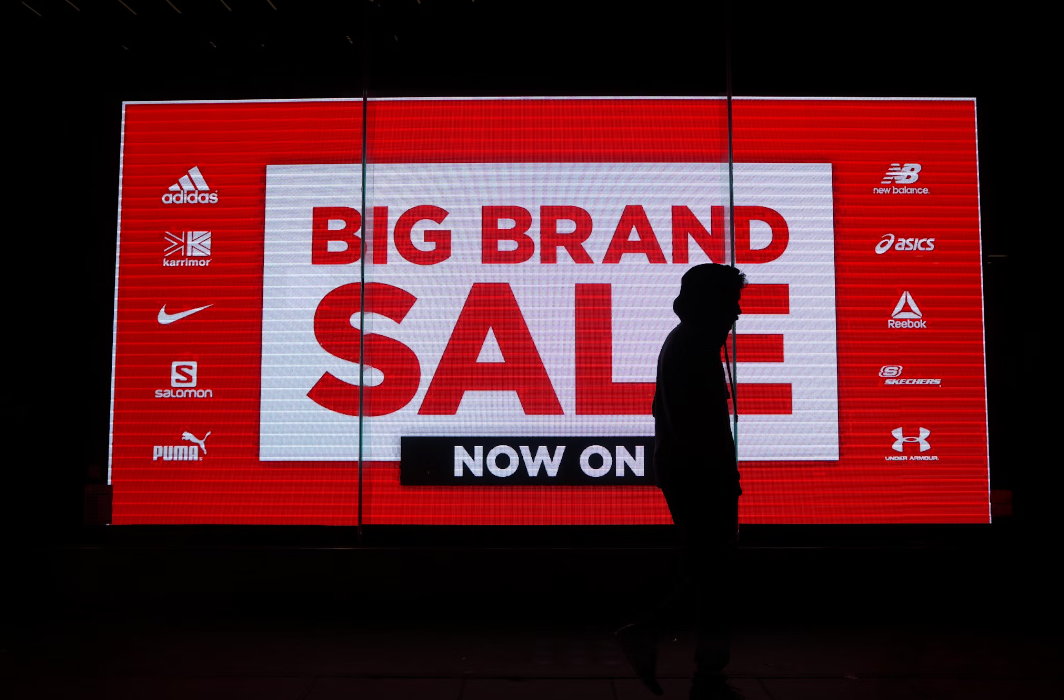Get the Best of Both: Balancing Brand and Sales

Contents
In the world of business, two key factors play a critical role in the success and growth of any company: brand and sales. These two elements are often seen as separate entities, each with its own set of goals and strategies. However, finding the right balance between brand building and sales maximization can be the key to long-term success. In this article, we will explore the relationship between brand and sales, the importance of balancing the two, strategies for achieving this balance, measuring success, and maintaining it in the long run.

Understanding the Relationship Between Brand and Sales
Before we delve into the importance of balancing brand and sales, let’s first define what these terms mean in the modern business context.
Defining Brand and Sales in Modern Business
Brand, in its simplest form, is the perception and reputation that customers have of a company. It encompasses everything from the visual identity, such as the logo and design, to the values and emotions associated with the company. A strong brand can evoke feelings of trust, reliability, and quality in the minds of consumers, setting the company apart from its competitors. On the other hand, sales refer to the revenue generated through the selling of products or services. It is the tangible result of a company’s marketing and operational efforts.
The Interplay Between Brand Image and Sales Performance
While brand and sales may seem like separate entities, the reality is they are deeply interconnected. A strong brand image can generate customer loyalty and trust, resulting in increased sales. When customers have a positive perception of a brand, they are more likely to make repeat purchases and recommend the brand to others, leading to a boost in sales revenue. Conversely, a decline in sales can have a negative impact on brand perception. If a company experiences a drop in sales, it may be perceived as less popular or successful, which can erode the brand’s reputation over time. It is a delicate balance that requires careful management and strategic alignment between brand-building activities and sales initiatives.
Moreover, the relationship between brand and sales extends beyond just customer perceptions. Brand equity, which is the commercial value that derives from consumer perception of the brand name of a particular product or service, plays a crucial role in driving sales. Companies with strong brand equity can command higher prices for their products, enjoy greater customer loyalty, and withstand market fluctuations more effectively. This highlights the importance of investing in building a robust brand that resonates with target audiences and creates long-term value for the business.
The Importance of Balancing Brand and Sales
When it comes to brand and sales, finding the right balance is crucial for several reasons.
Establishing a strong brand identity is essential for creating a lasting impression on consumers. A well-defined brand not only differentiates a company from its competitors but also fosters trust and loyalty among customers. Consistent branding across all touchpoints helps in building brand recognition and recall, which are vital for driving sales and sustaining long-term success.

Risks of Overemphasis on Sales
Putting too much emphasis on short-term sales goals without considering the long-term impact on brand perception can be detrimental. A relentless focus on sales at the expense of brand building may lead to a decrease in customer loyalty and a loss of long-term profitability.
Furthermore, a myopic focus on sales numbers alone may result in a transactional relationship with customers, where price becomes the primary differentiator. This can make the brand vulnerable to competitive pressures and erode its perceived value in the market.
Dangers of Neglecting Sales for Branding
Conversely, solely focusing on brand building without prioritizing sales can also have negative consequences. Ultimately, a strong brand is meaningless if it does not translate into revenue. A balanced approach ensures that brand efforts contribute to sales growth and vice versa.
Integrating sales strategies with branding initiatives can create a synergistic effect that drives both short-term revenue and long-term brand equity. By aligning sales messaging with brand values and promises, companies can enhance customer engagement and increase conversion rates. This harmonious blend of brand and sales not only boosts financial performance but also solidifies the brand’s position in the market.
Strategies for Achieving Balance
Now that we understand the importance of balancing brand and sales, let’s explore some strategies for achieving this delicate equilibrium.
When it comes to achieving balance between brand building and sales growth, it is essential to delve deeper into the intricacies of consumer behavior and market trends. Understanding the target audience’s preferences, behaviors, and pain points can provide valuable insights for crafting a strategy that resonates with both brand values and sales objectives.
Aligning Branding and Sales Goals
All stakeholders involved in the brand and sales efforts should have a clear understanding of the overall objectives. By aligning both departments’ goals, strategies can be developed that support both brand building and sales growth.
Furthermore, fostering open communication and collaboration between the branding and sales teams is crucial for ensuring a seamless integration of efforts. Regular meetings, joint brainstorming sessions, and shared KPIs can help bridge the gap between these two functions and drive cohesive strategies that deliver results across the board.
Implementing a Balanced Marketing Approach
A successful brand and sales strategy require a holistic marketing approach that combines both brand building and sales activation. This can include a mix of traditional advertising, digital marketing, public relations, and promotions.
Moreover, leveraging data analytics and market research can provide valuable insights into consumer behavior, enabling brands to tailor their marketing efforts effectively. By analyzing key performance indicators and consumer feedback, companies can refine their strategies to strike the perfect balance between brand equity and revenue generation.
Measuring the Balance Between Brand and Sales
Just as finding the right balance is important, measuring the effectiveness of brand and sales efforts is crucial for ongoing success.
Key Performance Indicators for Brand and Sales
Identifying key performance indicators (KPIs) that measure both brand and sales performance is essential. This could include metrics such as brand awareness, customer satisfaction, conversion rates, and revenue growth.
Regular Review and Adjustment of Strategies
No strategy can remain static in the fast-paced world of business. Regularly reviewing and adjusting brand and sales strategies based on data and market insights is vital to maintain the balance and adapt to changing market dynamics.
Maintaining the Balance in the Long Run
Achieving balance between brand and sales is not a one-time endeavor but an ongoing process. Here are some key factors to consider in maintaining this equilibrium.
Adapting to Market Changes and Trends
The business landscape is constantly evolving, and companies must be agile in adapting to market changes and consumer trends. This requires continuously monitoring the industry, competitors, and customer preferences to ensure that brand and sales efforts remain relevant.

Ensuring Consistency in Branding and Sales Efforts
Consistency is essential in building a strong brand and driving sales. From messaging to visual identity, all brand and sales efforts should align and communicate a coherent message to customers. This consistency builds trust and reinforces brand perception.
In conclusion, finding the right balance between brand and sales is critical for long-term success in business. By understanding the relationship between the two, acknowledging the risks of overemphasis or neglect, implementing strategies to achieve balance, measuring success, and maintaining this balance in the long run, companies can maximize their potential and get the best of both worlds – a strong brand and increased sales.
Ready to elevate your brand and boost your sales with a logo that captures the essence of your business? Let’s make a logo! With Boon, you’re just a few clicks away from a custom logo designed by the power of Artificial Intelligence, tailored to your preferences. Whether you’re looking to engage users, tell a compelling story, or strengthen your business across any industry, Boon is here to help you create a visual identity that resonates with your audience and aligns with your sales goals. Start your journey to a stronger brand today!

Mia Vargas is our Senior SEO & Branding Specialist, a dynamic force in digital strategy with a keen eye for brand storytelling. With over a decade of experience in optimizing online visibility and shaping brand identities, Mia seamlessly combines her technical SEO expertise with her passion for creativity. She is skilled at crafting strategies that not only elevate search rankings but also resonate with target audiences, ensuring our clients build meaningful, lasting connections. Known for her innovative approach and trend-focused insights, Mia plays a crucial role in driving our team to stay ahead in a rapidly changing digital landscape, balancing analytics with artistic flair to deliver impactful results.
